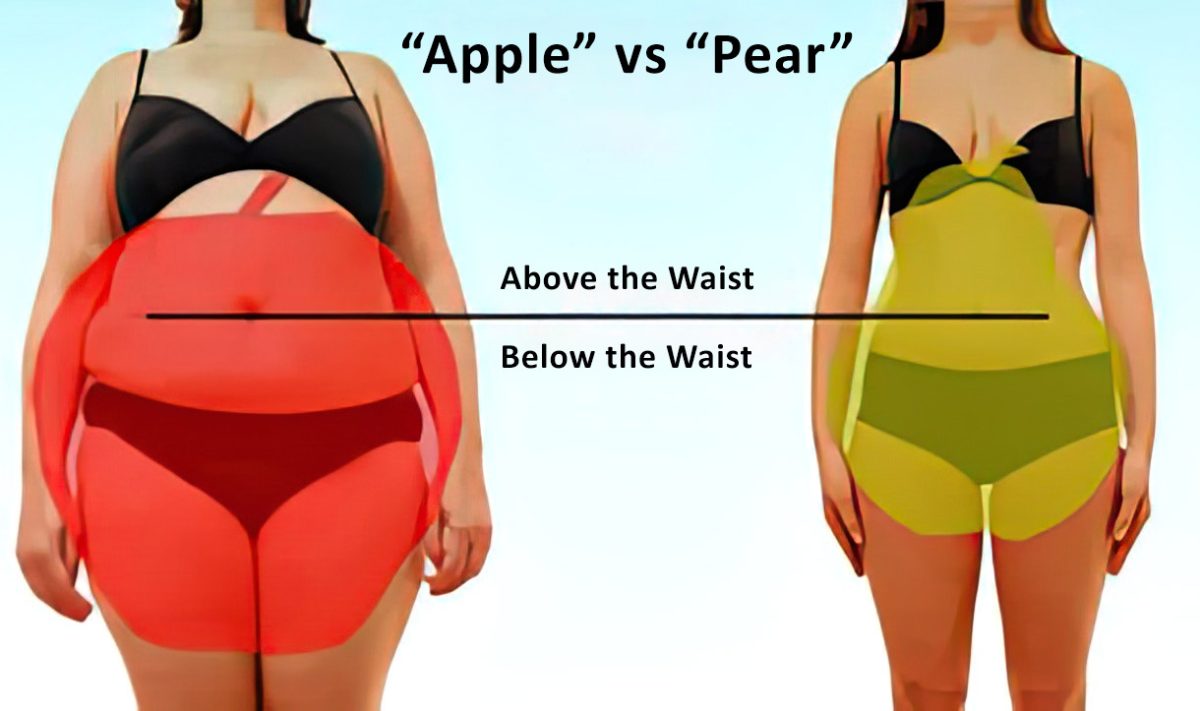Ever notice how some people can have big bellies but lean legs, or how women tend to store most of their fat in their thighs, hips, and butt? These are examples of fat distribution, which refers to where your body typically stores the fat, no matter what your weight is. This is important because where you store fat can be a predictor of health risks.
The waist-to-hip (WTH) ratio is a common measure of fat distribution. Your WTH ratio can help you track your weight loss progress, while also serving as a warning about your estimated health risk for problems related to being overweight, such as diabetes, stroke, and heart disease. In fact, a study reported in the American Journal of Clinical Nutrition reported that for some age groups, the waist-to-hip ratio is a better indicator of increased mortality risk than body mass index (BMI), which compares your height to your weight.
Calculating Your Waist-to-Hip Ratio
Use a measuring tape to measure your waist (at the smallest circumference of your natural waist, usually just above the belly button) and the circumference of your hips (at the widest part of your buttocks). To determine your ratio, simply divide your waist measurement by your hip measurement. Compare your result to the appropriate chart below, which is different for males and females.
| Females | Estimated health risk | Estimated body shape |
| 0.80 or below | Low | Pear |
| 0.81 to 0.85 | Moderate | Avocado |
| 0.85+ | High | Apple |
| Males | Estimated health risk | Estimated body shape |
| 0.95 or below | Low | Pear |
| 0.96 to 1.0 | Moderate | Avocado |
| 1.0+ | High | Apple |
Although all body fat is made of the same “stuff,” where it’s stored, it can make a big difference in both how risky it is to your health, and in how easy it is to lose.
Pear Shape (Low Health Risk)
If you’re pear shaped, you tend to carry most of your weight in your hips, thighs, and buttocks. Storing fat in your lower half is actually a healthier site for fat accumulation. Research shows that storing fat here may protect you against cardiovascular disease. In one study of 1,356 women, ages 60-85, Danish researchers found that those with excessive fat in the arms, legs, hips and buttocks had less atherosclerosis (hardening of the arteries) than those who stored most fat in their abdominal area and other central parts of the body.
Apple Shape (High Health Risk)
If you tend to carry weight in your abdominal area and upper torso, you’re an apple shape. People who are apple-shaped and tend to carry more weight around their waists (commonly referred to as a “pot belly”) are at a greater risk of lifestyle-related diseases such as heart disease and diabetes than pear-shaped people.
Avocado Shape (Moderate Health Risk)
You may hear about apples and pears all the time, but what about people who don’t fit into either category? The less common “avocado” shape is somewhere between an apple and a pear, with health risks higher than a pear-shaped person, but somewhat lower than a true apple-shaped person.
Improving Your Distribution
Once you know which body shape you have, and your potential level of risk, what can you do about it?
First, you have to accept that there is no way to change where your body stores fat—your genetics determine that. If you are an apple now, you will always be an apple, even if you lose a few extra pounds. Weight loss may not change your body shape, but it will reduce your size.
Secondly, it helps to know that there is no way to lose weight in specific areas of the body. For example, crunches might target the abdominal muscles, but they don’t burn fat from the belly; running might use your lower half, but it doesn’t mean that you’re burning fat from the legs alone. The best way to get rid of fat—no matter where it is on your body—is through regular cardio exercise and a healthy diet. Cardio (aerobic) exercise burns fat from all over the body. But if you tend to store fat in a certain area (apple or pear) it may take longer to lose fat from that specific area. Stay consistent and you will lower your risk for future health problems by achieving a healthy weight.
Lastly, don’t fear strength training. It’s a common misconception (especially among women) that strength training is going to make you “bulk up.” You may fear, for example, that since your thighs are a trouble spot, you shouldn’t lift weights because it will make your thighs look bigger. This is a myth. Women, in fact, are more likely to tone up from strength training rather than bulk up. Research shows that women can add up to 30% lean muscle and end up looking thinner, feeling stronger, and being firmer.
A well-rounded program of cardio and strength training, along with a healthy diet, will help with overall fat loss. No matter what your shape, maintaining a healthy weight will greatly reduce your risk of obesity-related illness.
UCLA Core Strength Trainers & Fitness Experts.








